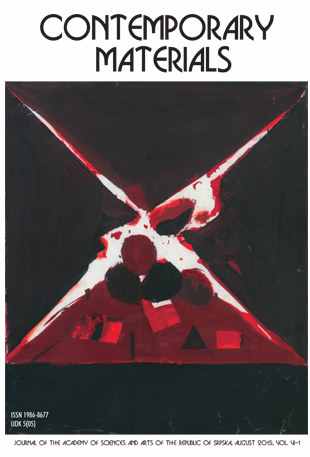FLOCCULATION STUDY OF NATURAL QUARTZ SAMPLE USING ANIONIC POLYACRYLAMIDE
DOI:
https://doi.org/10.7251/COMEN2002112SAbstract
The waste sludge generated during processing of iron ore in the Omarska mine (The Republic of Srpska, Bosnia and Herzegovina) is fine-grained (<15μm), containing relatively high concentrations of iron, and quartz as its major impurity. The flocculation behaviour of the primary natural raw “quartz” sample from Omarska mine was studied in the present paper. This sample is composed of major quartz which dominates over minor contents of clay minerals and feldspars, and contain 92.9% of SiO2. Particle size distribution analysis confirm that it is present as fine and ultra-fine particles. The zeta potential of quartz depends on pH value. Settling experiments were performed by using three different dispersants (Na-hexamethaphosphate, Na-pyrophosphate and Na-silicate), and anionic polyacrylamide as flocculants. The best results were achieved with Nahexametaphosphate (1000 g/t) and anionic polyacrylamide A 100. The effect of a flocculant on the settling rate depends on solid concentration. Settling rates increase significantly with the increase of the liquid component in both cases (natural settling and hindered settling by addition of a flocculant).
Keywords: Quartz, iron ore, sludge, flocculation, settling rates.
